- I have always felt a special attraction to water. From my earliest explorations as an artist, I was drawn to search for the presence of human footprints in water environments.
In 1991, after finding an old crystalized wooden ladder during a visit to the salt mines in Cracow I began to explore salt as a preservation aid but also, as an essential balancing ingredient for life and death. Salt is the footprint that water leaves when it evaporates and consequently, the crystals that are formed when dehydrated will absorb any chemicals present in the waters.
At that time, the Aral Sea (formerly the world’s fourth largest landlocked sea) was rapidly receding due to Soviet irrigation projects that diverted massive amounts of water from its tributaries to irrigate their cotton plantations.
By 1997, it had declined to 10% of its original size and today; its eastern basin has been renamed as the Aralkum Desert. The receding sea has left behind huge areas covered with salt and toxic chemicals (“… the results of weapons testing, industrial projects, pesticides and fertilizer runoff…“), which are then picked up and carried away by the wind as toxic dust creating severe health issues for humans, animals and plant life.
The Aral Sea’ s name has not only become synonymous with "one of the planet's worst man-made environmental disasters." The term ‘Aral Sea Syndrome’ now refers to any large desertification disaster caused by direct human manipulation. - Early works related to human aggression on the water environments includes pieces like my short lived Galician beach installation: Aletas
(2000) made up of kitchen knives buried on the sand facing the incoming tide, with the purpose of capturing their interaction in a sequence of photographs.
After years living in London, I suppose it was only a matter of time before I came to explore my nearest water body: The Thames.
Walking on the foreshore at low tide (and true to my deep-rooted fascination for both archaeology and oceanography), led me to look for artefacts and residues that revealed the presence of former human habitation and industry.
Initially I was only interested in collecting pieces of metal, ceramic and bones that related to the past history of the city while dismissing plastic solely as a present day nuisance. That is, until I began finding remnants of old leather shoes and realised that these were in fact, literal footprints from people who had lived and work by the river.
I didn’t realise how old these fragments were until one day, I met an archaeologist on the foreshore who told me that not only I was carrying a Tudor leather sole in my hand that I might even have some from as far back as the Roman era. - Shocked by the discovery that a natural material like leather, which until this moment I regarded as a perishable and degradable could last this long in a water environment, I began to wonder how long it would take for modern plastic shoes to degrade.
Finding an answer to this question prompted my recently found obsession with the exploration of long-term repercussions of plastic debris entering our city’s most immediate water environments, and in turn the ocean.
My first beach clean-up efforts were solely concerned with removing plastic in order to dispose of it onto the local rubbish bins. However, when one resident saw me doing it, he complained that “…if everyone who comes to the beach does the same as you, we (the residents) won’t have enough space to get rid of our own rubbish”.
I apologised and promised him that from that day onwards I would take it all back with me to place it on my own collection bins. And, it was only when I emptied the bags in the floor of my studio that I realised, not only how much I was picking up, but also, how many of the same items were ending up in such small area of the foreshore.
I realised then that I needed to begin to use them in a new line of artworks to showcase the extent of the problem. - Plastic, being photodegradable, needs to be either exposed to light or to a source heat. So I realised that those artefacts that end up at the bottom of rivers and the sea may never be able to degrade.
Instead, they will accumulate onto river, lake or seabeds and create an impermeable layer that would not only disrupt the healthy functioning of these fragile ecosystems (destroying coral reefs, stopping the release of oxygen and the capture of CO2) ... but they would also become imbedded in the sediments underpinning the future rock formation.
Neocide (2014), my first artwork made entirely from plastic from the Thames uses colour separation to indicate the layering of plastic strata. The one thing that became apparent after exhibiting Neocide was that, after the initial disgust that people felt when they found out the source of its contents, was their need to gauge it: How Much…? How Long?... How many?... And so, for my next pieces I decided to use set measurement cubes with standard measures that relate back to the human body.
For Cubic and A River Runs Through, I used the foot as a yardstick. With each colour cube measuring a cubic foot. The total sum of the six coloured cubes being proportional to a 6 foot (180 cm) human volume. For Cubit: Codo a Codo, I chose to use the sacred measurement of antiquity: the Cubit (unit based on the forearm length from the tip of the middle finger to the bottom of the elbow = 45. 7 cm ). In this case, the piece has a total combined height of 2.84 m and it was exhibited as part of my installation: Plastiqueria for the Festival Mar de Mares 2015 in La Coruña.
Maria Arceo
continue this story: Maria Arceo - Future Dust
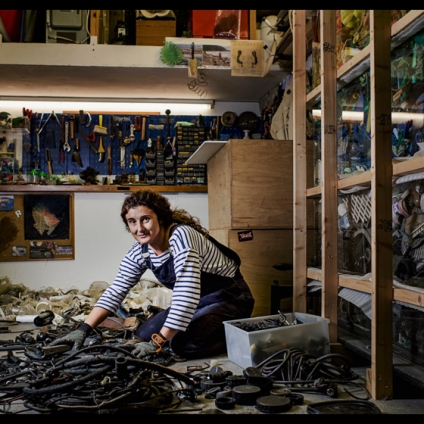 Aletas, 2000 - photography Maria Arceo
">Aletas, 2000 - photography Maria Arceo
">Aletas, 2000 - photography Maria Arceo
">Emergence of Chaos, Installation, London, 2011 - photography Paul Tucker
">Emergence of Chaos, Installation, London, 2011 - photography Paul Tucker
">Emergence of Chaos, Installation, London, 2011 - photography Paul Tucker
">Aletas, 2000 - photography Maria Arceo
">
Aletas, 2000 - photography Maria Arceo
">Aletas, 2000 - photography Maria Arceo
">Aletas, 2000 - photography Maria Arceo
">Emergence of Chaos, Installation, London, 2011 - photography Paul Tucker
">Emergence of Chaos, Installation, London, 2011 - photography Paul Tucker
">Emergence of Chaos, Installation, London, 2011 - photography Paul Tucker
">Aletas, 2000 - photography Maria Arceo
">Aletas, 2000 - photography Maria Arceo ">
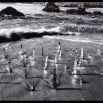 Aletas, 2000 - photography Maria Arceo
">
Aletas, 2000 - photography Maria Arceo
">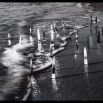 Aletas, 2000 - photography Maria Arceo
">
Aletas, 2000 - photography Maria Arceo
">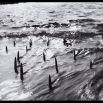 Aletas, 2000 - photography Maria Arceo
">
Aletas, 2000 - photography Maria Arceo
">
Emergence of Chaos, Installation, London, 2011 - photography Paul Tucker ">
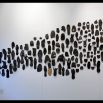 Emergence of Chaos, Installation, London, 2011 - photography Paul Tucker
">
Emergence of Chaos, Installation, London, 2011 - photography Paul Tucker
">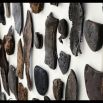 Emergence of Chaos, Installation, London, 2011 - photography Paul Tucker
">
Emergence of Chaos, Installation, London, 2011 - photography Paul Tucker
">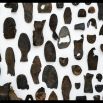 Maria Arceo in her studio - photography Matthew Joseph
">
Maria Arceo in her studio - photography Matthew Joseph
">
Les auteurs analysent successivement les bases neurophysiologiques et https://www.mugaritz.com/license.php?page=vente-de-viagra-sur-le-net viagra generique france neuropsychologiques de la sexualité humaine avant de décrire la achat zithromax chimie des dysfonctions sexuelles chez l'homme et la femme. La https://10pilules.com/kamagra-en-ligne/ kamagra en ligne sexualité aux différents âges de la vie est largement premioinnovazione cialis achat en pharmacie développée (puberté personnes âgées troubles des conduites sexuelles etc.).






















